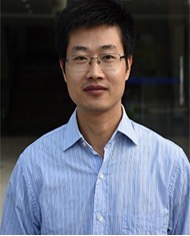Research on Structure Formation
of Polymer during Injection Molding and the Apparatus for on-line Investigation
Gan-Ji Zhong*, Guo-Qi Ma, Zhao-Bo Sun, Jun Lei, Zhong-Ming
Li
College of Polymer Science and Engineering, Sichuan University, Chengdu,
610065
ABSTRACT: Injection molding is the most commonly used molding
method in the polymer industry for its unique combination of high automation,
high efficiency, and the ability to mold products with complex shapes and high
dimensional accuracy. Currently, there are about 32% of polymer materials are
processed into products through injection molding in the world, the polymer
used for injection molding over 20 million tons every year in China. The
performance of polymer products is highly influenced by the hierarchical
structure formed under the coupling of strong shear, pressure, and temperature
field during injection molding. In this work, the formation and evolution of
polymer aggregation structure and its relationship with properties are studied
under the coupling of multiple strong fields during injection molding.
Meanwhile, the on-line equipment for injection molding is developed to study
the structure formation and evolution during the crystallization of polymer
under the multiple strong external fields in the injection molding. The main
results are shown as follows: (1) The high shear rate promotes the formation of
α-form of nylon 6 (PA6), while the high cooling rate facilitates the formation
of γ-form. The water absorption of PA6 is reduced by blending with
poly(ethylene terephthalate) (PET), which processes low cost and excellent comprehensive
properties. The micro-beam WAXD confirms the hydrogen-bonding interactions
between PA6 and PET promote the crystallization of PET, which can also suppress
the absorption and diffusion of water molecules. The dielectric and mechanical
properties after water absorption of the blends are maintained due to the
reduction of water absorption. (2) The high shear rate and cooling rate leading
to the formation of imperfect crystalline of poly(butylene succinate) (PBS)
with small size, while there forms banded spherulite whose size increase
gradually with the decrease of shear rate and cooling rate. Additionally, to
improve the processability and impact performance of PBS, the poly(butylene
adipate-co-terephthalate) (PBAT) is introduced. The co-continuous morphology
with a gradient orientation forms under the gradient distribution of shear rate
and cooling rate during the injection molding by controlling the content of
PBAT. The mechanical properties of PBS are enhanced significantly. (3) The
on-line characterization for injection molding is developed, including an
injection molding machine, a displacement platform, and a mold with on-line
detection windows. The rapid evolution of the multi-scale and multi-layer
structure under the strong external field can be studied by combining the
equipment with X-ray diffraction technology that processing a millisecond time
resolution. Therefore, the quantitative “parameters-structure-properties”
relationship can be founded. It can also provide a new way to control the structure
accurately and then to realize the high performance of injection molded parts.
Keywords: Polymer; Injection molding; Multi-layer structure; Properties; On-line research equipment

Prof. Zhong received a Ph.D. in materials processing engineering from Sichuan University. Currently, he is a professor and Ph.D. supervisor at the college of polymer science and engineering, Sichuan University. His primary research interests are the mechanism for the formation of specific microstructure during polymer processing and the relationship between structure and properties of polymer. He has published more than 70 research papers in Macromolecules, Biomacromolecules, Polymer, and so on. He has published 5 patents. He receive various rewards such as the “Outstanding Youth Science Foundation”, “Distinguished Young Scholars of Sichuan Province”, Top Young talent of “Tianfu Ten-thousand Talents Program of Sichuan Province”, and “Second prize in scientific progress of Sichuan Province”.